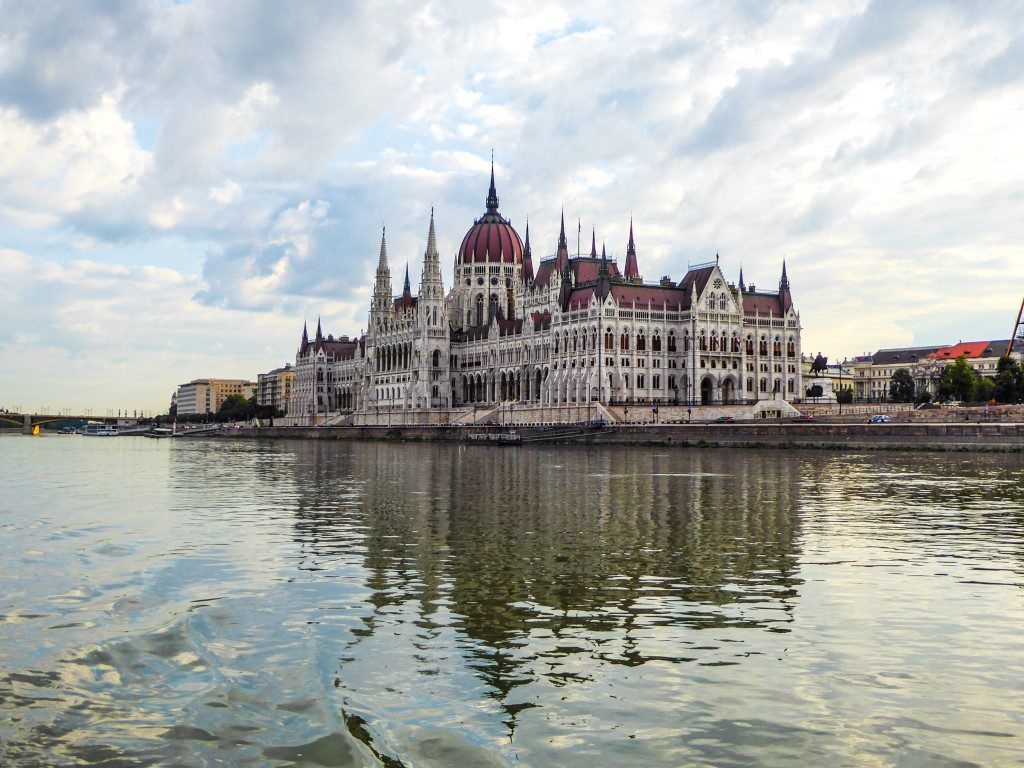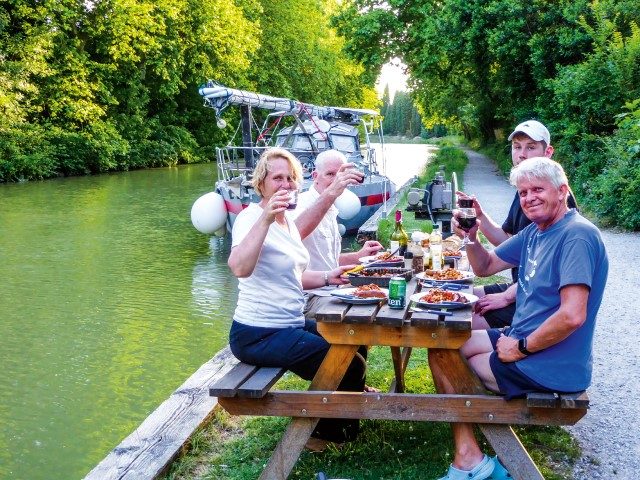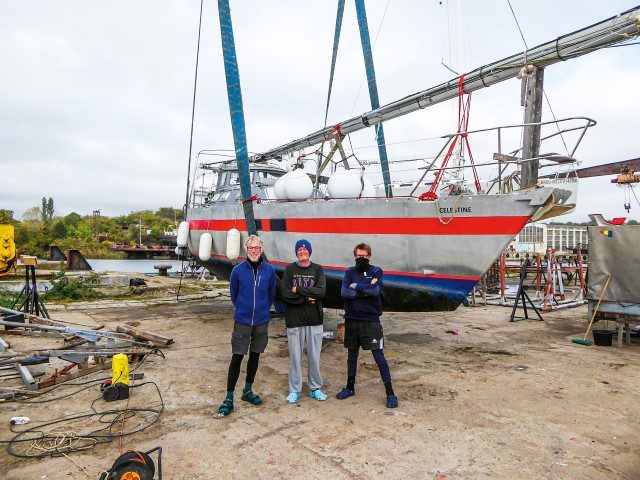

Taking a yacht nearly 5,000km along Europe’s rivers and canals involves a lot more than lowering the mast. There are also 484 locks, numerous aqueducts, lifting bridges and three tunnels. Though the four-month voyage was equivalent to driving from Wellington to Auckland seven times at 10km/h, only one word can describe it – magnificent! Story by John Woolf.
Granted, it was an impulsive decision. I’d returned to my yacht Celestine in Rochefort, France to prepare for the coming season. The plan was to sail across the Bay of Biscay to Spain, then down the Spanish and Portuguese coasts, past Gibraltar and into the Mediterranean. A couple of things changed that.
From earlier experiences I knew I enjoyed life on the inland waterways and had always fancied the idea of crossing the entire width of Europe via canal and river. Secondly, and crucially, my mate Pete was committed to spending the season on Celestine. Having a reliable crew would be critical for this plan to succeed. The trip would begin in Bordeaux on the west coast of France and see us head east, through nine countries, to the Black Sea.
The search for a suitable boat for this sort of cruise actually began in 2017 (see Boating New Zealand, February 2018). I wanted a shoal-draft vessel – they’re able to wriggle into much more sheltered and interesting anchorages.
Celestine is a Philippe Harle-designed aluminium Carambola 38 – a centreboard, cutter-rigged masthead sloop powered by a 40hp Volvo D2 with sail drive. Having previously owned two steel yachts I’d chipped enough rust to last a lifetime – aluminium was my hull material of choice!

So, after a glass or two of Bordeaux’s finest – and after carefully measuring Celestine’s height (with lowered mast) to ensure we’d clear the 3m maximum air draft for the bridges, the decision was made. We agreed we were probably a bit crazy but got to work, transforming Celestine from a bluewater yacht to a canal and river boat.
First, the recently refitted sails and canvas were removed and stored. Pete scoured the boat yard for suitable timber to make the mast cradles while I began the unenviable task of disconnecting the extensive wiring from the mast and threading it back on deck. Not looking forward to fitting that lot back together.

A week later we were ready – mast on deck, the gunnels festooned with new fenders. Most importantly, the maps and cruising guides for the European waterways had been delivered. Interestingly, the only English cruising guide for the Danube River is by Rod Heikell – it was published in 1991 with no updates since…
We began the journey by entering France’s Garonne River (west coast). Navigating rivers in Europe is interesting – with great variables created by the tide. On occasion the log showed over 20km/h (rivers and canals in Europe use the metric system) over the ground when the flood tide got going. We made it to the city of Bordeaux before the tide turned, only to find the single marina listed in the guidebook was closed.

As resourceful cruisers we made do by tying to a pontoon on the riverbank, only to get chucked off the next morning because we hadn’t booked in advance. Who books a pontoon? We eventually found a marina further up the river, but it wasn’t ideal as the berth was on the outer side of the pontoon, fully exposed to the tide which runs at over 7.5km/h at peak flow.
Departing was tricky. The tidal flow – from astern – was significant.
The tiller was held centred by a line, and when this line was released the force of the water pinned the rudder hard over – the tiller pinned me firmly against the side of the cockpit. The force of the water also tore the stern line from my grasp.

With the throttle at full-astern, I yelled at Pete to release the bow line and we pirouetted, stern first, through 360o into the middle of the river, with the bow narrowly missing the boat on the pontoon ahead of us.
Pete’s pale, wide-eyed face appeared.
It declared ‘he-couldn’t-take-this-sort-of-thing-anymore-and-was-going-home’ (that’s the sanitised version). Fortunately, as the sun came up, we wafted upriver with considerable tidal assist. He regained his composure and by evening we were through the lock and happily moored in the calm waters and friendly marina community at Castets en Dorthe on the Canal de Garonne.
EASTWARD HO
The journey across Europe was a kaleidoscope of colour, culture and experiences. Among the highlights was rising up 22m in the mighty Ecluse de Bollene lock on the Rhône River. And attending a beer festival in Bavaria and wondering how on earth I got there by boat? I particularly enjoyed anchoring in a glass-calm lagoon off the Rhine River, sitting on deck under bright stars in a black sky. Vienna was a treasure – as was going for a walk in a random village where we moored for the night.
Also enjoyable were the friends that turned up to share the experience for days or weeks at a time. At one point I had three Irish mates on board – the chaos is hard to describe.

The passage down the Danube River required careful planning as suitable anchorages/mooring places are few and far between. This is further complicated by the requirement in eastern European countries to have full border control checks and paperwork when entering or leaving a country – even though they are part of the EU. A bit of a shock after borderless western EU countries.
In practical terms, this meant we couldn’t select a stopover in Bulgaria on one side of the river, as we were only checked into Romania (on the opposite bank).
In Serbia and Romania there is no tourist infrastructure for cruisers and no marinas. There are only small boat clubs for runabouts, so our mooring of choice (once we’d covered our target 100+ kilometres per day), was one of the many disused cargo barges or peniches moored in the stream.

The last few hundred kilometres of the Danube were particularly tricky as the river was some four metres down on its normal depth. Even the cargo peniches were half-loaded to achieve a shallower draft. Celestine touched bottom numerous times (even between the channel’s marker buoys), so it was a relief to leave the river at Cernadova and turn onto the Danube– Black Sea Canal.
Some 60km and two locks later we were in the large port of Constanta on the Black Sea and – by some miracle – we’d made the 30 September target date.

A few days later we motored 26nm down the coast to Mangalia where Celestine would be hauled out for the winter. Motoring on the Black Sea with a lowered mast felt odd, but so much more relaxing than the concentration required on the canals and rivers.
With Celestine successfully put to bed for the winter, we headed for the capital Bucharest for a few days R&R before departing for our respective home countries.
SOME HIGHLIGHTS
We spent an enjoyable day strolling around Vienna. The city’s renowned for its beautiful buildings and gardens
My favourite – for sheer wow factor – was the Hofburg, the former principal palace of the Habsburg dynasty rulers, built in the 13th century.

Winding their way through buildings and courtyards, Lyon’s ‘traboules’ (secret covered passageways) allow you to explore a hidden aspect of the city. Originating in the 4th century they offered inhabitants shortcuts to the Sôane River to collect water, and were later also used by silk merchants. The doors are only identified by a small plaque and you need a map to find them.

The Cite de l’Automobile Museum in Mulhouse on the Canal du Rhône au Rhin was a standout, with the world’s largest collection of Bugattis. The 1929 Bugatti 35B model was capable of 210km/h – pretty impressive for that era!




